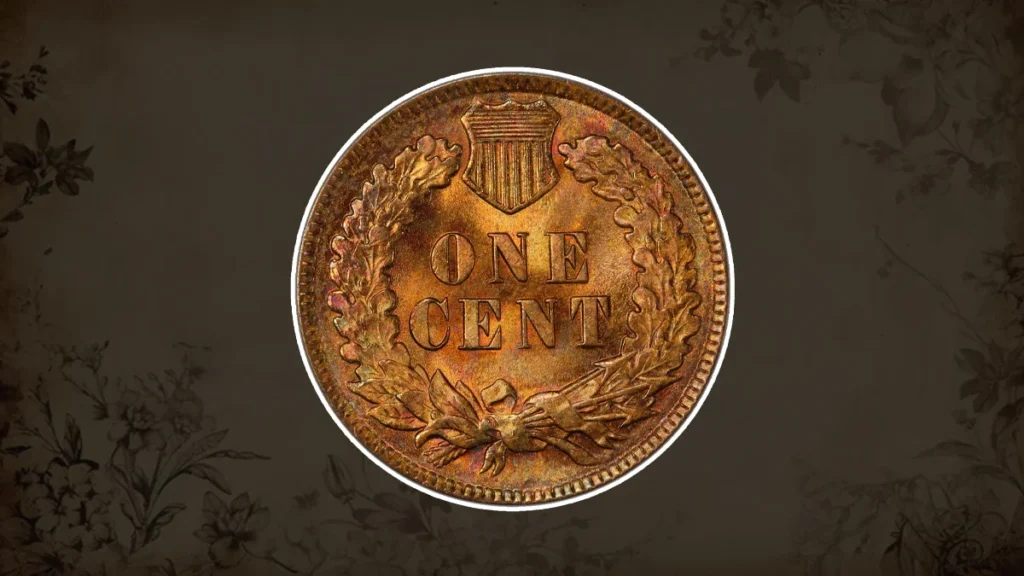
The 1897 Indian Head Penny is part of a unique series of U.S. coins produced between 1859 and 1909. Both rookie and expert numismatists favor these coins because of their reasonable cost such as their historical value, which attracts collectors. Understanding the quality, color, and possible flaws of an 1897 Indian Head Penny are some of the aspects that go into determining its value. The coin’s design, rarity, grading, history, specs, and value will all be thoroughly explored in this article.
History of the 1897 Indian Head Penny
James B. Longacre designed the Indian Head Penny series, which started in 1859 and continued until 1909. Its timeless style represents America’s developing sense of national identity in the 1800s. The Philadelphia Mint, which at the time was the only establishment making the Indian Head Penny, struck the 1897 issue. Considering that more than 50 million Indian Head Pennies were made in 1897, they are somewhat unique on other dates in the series.
Specifications of the 1897 Indian Head Penny
- Composition: 95% Copper, 5% Tin and Zinc
- Diameter: 19.05 mm
- Weight: 3.11 grams
- Edge: Plain
- Mint Location: Philadelphia (No mint mark)
- Mintage: 50,464,392 for circulation; 1,938 proof coins
The composition and design of the Indian Head Penny remained consistent throughout its mintage, with a high copper content that gives the coin its characteristic reddish-brown appearance.
Design of the 1897 Indian Head Penny
Obverse Design:

The word “LIBERTY” appears on the headband of a Native American-style headdress worn by a left-facing bust of Liberty on the obverse. The words “UNITED STATES OF AMERICA” surround the coin along its edge, while the date “1897” is shown under the picture. When evaluating the coin’s condition, it is important to consider the fine details of the headpiece and Liberty’s face.
Reverse Design:

The reverse has an oak wreath surrounding the number “ONE CENT.” A tiny shield, defining strength and protection, is positioned in the center above the wreath at the bottom. After its introduction in 1860, this reverse form was used as the norm for the rest of the Indian Head series.
Rarity and Condition of the 1897 Indian Head Penny
Although not rare, the 1897 Indian Head Penny’s worth can just vary significantly depending on its condition. These coins, which usually have values between $1 and $30, are rather common and reasonably priced in circulated grades. However, because the coin is extremely uncommon in such excellent form, its value rises significantly in higher grades, like MS65 (Mint State) or better.
In 2019, an MS67 specimen with a strong red shine sold for $45,600, the highest amount known for an 1897 Indian Head Penny. The color of a coin is a major factor in its worth; for example, “red” pennies are far more rare and valuable than “brown” or “red/brown” ones.
Grading the 1897 Indian Head Penny
Grading is an essential factor in determining a coin’s value, with grades ranging from 1 to 70 on the Sheldon scale. Here’s an analysis of the most common grading terms used for Indian Head Pennies:
- Basal State-1 to Fair: Coins are heavily worn and barely recognizable. These coins typically have little to no collectible value.
- Good (G-4 to G-6): The details are heavily worn, but the coin’s date and basic design elements are visible.
- Very Fine (VF-20 to VF-30): Moderate wear is evident on the raised surfaces, but the overall details are still clear.
- Extremely Fine (EF-40): Light wear is present only on the highest points of the design.
- About Uncirculated (AU-50): Minor traces of wear are visual on the raised surfaces.
- Mint State (MS-60 to MS-70): Coins show no signs of wear. An MS60 coin might have some noticeable blemishes or marks, while an MS70 coin is considered perfect.
- Proof (PR-60 to PR-70): Coins were made specifically for collectors, usually displaying sharper details and a mirror-like finish.
1897 Indian Head Penny Value Chart
| Coin Type | MS60 | MS63 | MS65/PR67 | MS67/PR68 |
| 1897 No Mint Mark Indian Head Penny | $40 | $70 | $200 | $20,000 |
| 1897 No Mint Mark Proof Indian Head Penny | $150 | $275 | $550 | $3,000 |
Errors Found in the 1897 Indian Head Penny
These errors can make the 1897 Indian Head Penny more valuable to collectors. Here are some notable examples:
1. Neck Protrusion Error (“1 in Neck”):
This error appears when the date is punched twice onto the coin, resulting in a part of the “1” from “1897” occurring on the neck of Liberty’s portrait. Coins with this error can be valued at least $30 in lower grades and over $3,000 in higher grades.
2. Double Strike:
This happens when a coin is struck more than once, causing the design to appear off-center or doubled. The value of double-struck coins can start at $300 and increase depending on the severity of the error.
3. Repunched Date:
In some cases, the date is punched more than once, making a shadow effect or thicker-looking digits. This error is highly demanded, with some coins bringing $150 or more, and exceptional examples selling for over $30,000.
Value of the 1897 Indian Head Penny
The value of an 1897 Indian Head Penny can vary significantly based on its grade, color, and any errors it may possess:
- Brown Coins: These tend to be the least valuable, as they are the most common color variety. An MS66 brown coin may be worth around $400.
- Red/Brown Coins: These are more desirable than brown coins and often fetch twice the value. An MS66 red/brown coin could be valued at around $750.
- Red Coins: These are the most valuable due to their rarity and visual appeal. An MS66 red coin might be worth approximately $4,500.
Related Post –
- 1859 Indian Head Penny: A Complete Guide
- 1969 Lincoln Penny: A Complete Guide
- 1944 Lincoln Wheat Penny: A Complete Guide
- 1926 Lincoln Penny: A Guide for Coin Enthusiasts
Conclusion
An iconic part of American numismatic history, the 1897 Indian Head Penny offers collectors the chance to have a coin that is more than a century old. High-quality samples or ones with mistakes can be quite valuable, yet they are not rare at all. Anyone planning to purchase, sell, or collect this coin needs to understand the grading system and how factors like color and mint flaws impact the value. Collectors continue to find the 1897 Indian Head Penny to be an interesting and attractive coin, regardless of whether they have a mint-state or well-circulated coin.
